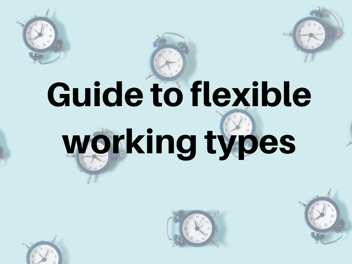10 Tips to Introduce a New Flexible Employee
Maximise the value of your new flexible employee by following these simple tips, extracted from Ten2Two client discussions and feedback:
1. Clarify the flexible working pattern on the first day
Whilst it is probably clear in the contract, talking through the agreed working hours and days with the employee on their first morning provides immediate clarity. It may also be useful to discuss any potential variations e.g. changes to hours or flexibility in days of the week (if they’re working a part-week) during busy times. Clarifying the core working week and the circumstances in which it might change is a neat start to your working relationship.
2. Establish ‘Out of Hours’ availability
Flexible employees may want to do some work, handle an issue or take important calls when they are not working – especially if they’re out for a few days. This shouldn’t become the norm but it frequently occurs amongst committed flexible employees. To keep the extra-curricular work manageable, discuss & agree the circumstances when it’s OK or important to contact them, the best method (calls, texts or emails) and the best times.
3. Establish a weekly handover process
Flexible employees should become accustomed to ensuring there are no loose ends when they leave the office – the last day of a short week is like the day before you go on holiday – but every week. However, there will be occasions where things need to be done when the flexible employee isn’t there, so set up a formal handover process, identifying what and to whom things can be handed over when required.
4. Make sure your communications reach everyone
When the team is not all in the office every day, a shout across the office about some news or an event clearly won’t get to everyone. It sounds obvious but make sure your team meetings are held on a day when everyone is routinely in the office. And inform the team of any important news and events in advance, making sure there’s no chance you might miss anyone out when it’s rushed.
5. Check the team really understands how flexible working works
Miscommunication and misunderstanding about flexible working within the team can often lead to an unsuccessful start for a flexible employee and the team they work in. Talk to the team about why you haven’t filled a role full-time; get them to identify the areas the new person is going to add value; and agree where they can help. It’s worth putting some effort into getting the team working together as a cohesive unit as soon as possible.
6. Set clear and achievable objectives and targets
If you judge your team by the fact that they’re in the office, it’s time to change! Maximise the value and impact of your flexible employee by setting out objectives or targets to be achieved given their skills, experience and working hours. This will provide clear structure to the role, an effective method of assessing performance and ensure the employee ‘s role is not too stretched – or not stretched enough! In fact, why not do the same for all employees.
7. Assess the success of the flexible working format
A regular informal review to discuss performance and achievement against objectives relative to the working format can be an effective way to ensure a flexible working pattern meets the needs of the job, the team around them and the company as a whole. In many instances, slight changes can be made to the working format or working hours/days to meet the needs of the job more effectively.
8. Get the technology right
If your flexible employee is doing any work at home or out of the office, try to provide the technology that will make it easy for them. If they’re regularly working at home, a laptop and broadband should be provided as standard. Or consider giving them a Smartphone if occasional but important emails need responding to and possibly provide a calls allowance if they’re using their home phone frequently. Video and instant messaging are also very accessible and very inexpensive.
9. Treat your flexible employee like a normal employee
There’s no need to give special treatment to flexible employees (some clients think they should). They need to be on time (or available), achieve their objectives and follow company policy just like any other employee. If your flexible employee is not performing, follow your usual performance improvement and disciplinary processes and as part of this process, make sure you have been fair in structuring the job around the contracted hours.
10. Give people responsibility for their own effectiveness
Ten2Two stresses the need for a flexible working employee to take control of their own effectiveness as their working pattern may impact their role. For example, proposing adjustments to their working pattern that could improve effectiveness, taking the initiative on any internal communications issues and making sure they do effective handovers. Flexible employees can be more time-efficient that full-time employees but they have to take control of the issues.


 Back to resources
Back to resources 4 min read
4 min read








